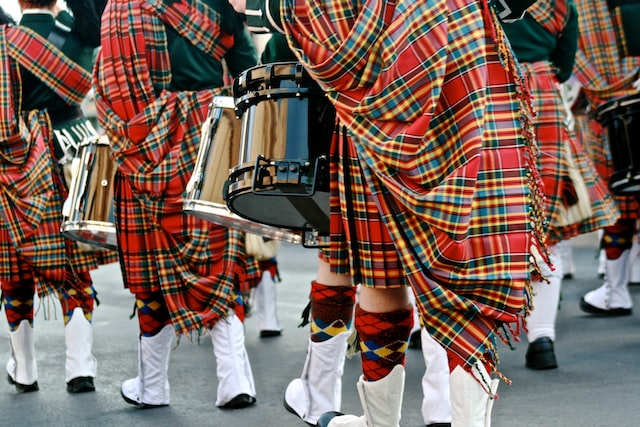That bagpipe-playing man in a tartan kilt isn’t all he’s cracked up to be
Enlarge

The bagpipe-playing man in a tartan kilt is an invention, a wildly successful one.
In ‘The Invention of Tradition’, the 1983 book edited by two Eric Hobsbawm and Terence Ranger, the late historian Hugh Trevor-Roper discusses the 17th century invention of “the whole concept of a distinct Highland culture and tradition”.
Whenever Scotsman “gather together to celebrate their national identity”, he writes, “they assert it openly by certain distinctive national apparatus… to which they ascribe great antiquity, (but) is in fact largely modern.”
The kilt, woven in a tartan whose colour and pattern supposedly indicates a Scottish “clan”, was invented by Thomas Rawlinson, an English Quaker industrialist, in the 1720s.
The invention of a Scottish pedigree was begun by Scots themselves a half-century later.
The displacement of the harp for the bagpipe as a ‘traditional’ musical instrument of the Scots also came about in the 18th and 19th centuries.
The invention of an independent Highland tradition and its imposition of on the Scottish nation, occurred in three stages, writes Trevor-Roper. “First, there was the cultural revolt against Ireland: the usurpation of Irish culture and the re-writing of early Scottish history, culminating in the insolent claim that Scotland – Celtic Scotland – was the’ mother-nation’ and Ireland the cultural dependency. Secondly, there was the artificial creation of new Highland traditions, presented as ancient, original and distinctive. Thirdly, there was the process by which these new traditions were offered to, and adopted by, historic Lowland Scotland: the Eastern Scotland of the Picts, the Saxons and the Normans.”
Along the way there were some quite remarkable feats of the imagination, not least Sir Walter Scott’s insistence in an 1805 ‘Edinburgh Review’ essay that the ancient Caledonian of the third century AD had worn “a tartan philibeg”. For the 1822 state visit to Edinburgh of the Hanoverian King George IV, Sir Walter would also design a pageant using differentiated ‘clan tartans’ as part of a pageant.
And that lone bagpiper playing outside the royal windows of Balmoral Castle in Scotland? It’s not an ancient royal tradition but an indulgence of Queen Victoria. Her husband, Prince Albert, bought the estate for her in 1852 – the couple built the existing castle in 1856 – and the queen introduced the ritual of a bagpiper playing in the morning simply because she liked its high wail.
We will next look at the popular ritual of the British monarchy, the whys and wherefores of its invented traditions and historian David Cannadine’s view of pageantry as propaganda.
Also read:

